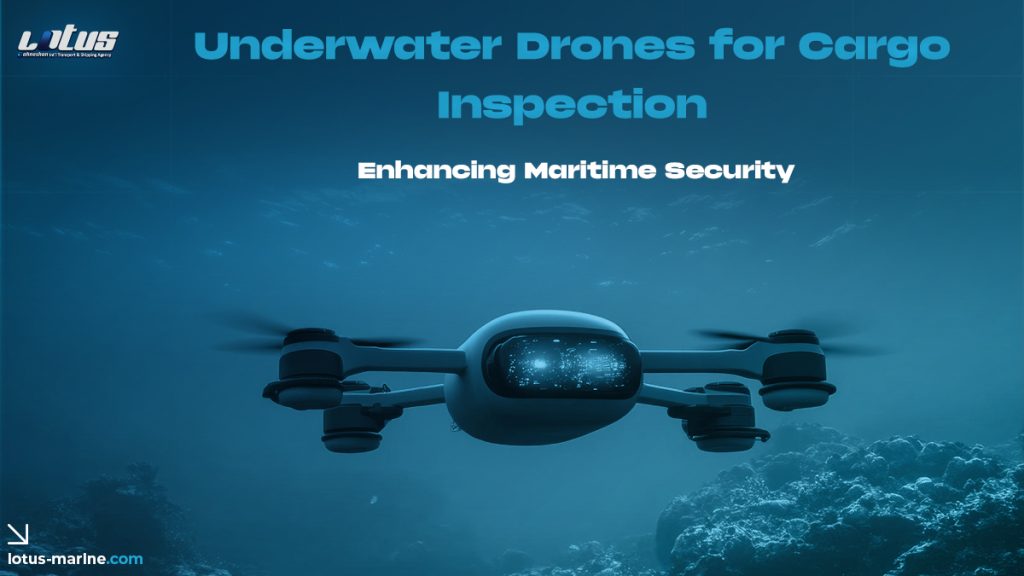Introduction
As global trade continues to expand, ensuring the security of maritime cargo has become a top priority. Underwater drones, also known as Unmanned Underwater Vehicles (UUVs), are revolutionizing cargo inspection by providing advanced surveillance, detecting threats, and improving efficiency in maritime security. This article explores the impact of underwater drones on cargo inspection and their role in strengthening global maritime security.
The Role of Underwater Drones in Cargo Inspection
1. Enhanced Security Surveillance
Underwater drones are equipped with high-resolution cameras, sonar systems, and AI-driven analytics to detect unauthorized cargo, hidden compartments, and potential threats beneath vessels. These capabilities help authorities prevent smuggling, human trafficking, and contraband transportation.
2. Rapid and Efficient Inspections
Traditional underwater inspections require divers or large-scale equipment, which can be time-consuming and expensive. UUVs provide a faster and cost-effective alternative, reducing downtime for cargo ships and improving overall operational efficiency.
3. Automated Monitoring and Data Collection
Equipped with real-time data transmission capabilities, underwater drones continuously monitor cargo vessel integrity, structural conditions, and potential security risks. The collected data can be analyzed for predictive maintenance and risk assessment.
4. Environmental and Safety Benefits
Unlike human divers, underwater drones operate in hazardous environments without risking human lives. Additionally, they help detect environmental hazards such as fuel leaks, illegal waste dumping, and structural damages that could lead to maritime disasters.
Challenges in Implementing Underwater Drones for Cargo Inspection
Despite their advantages, the adoption of underwater drones in cargo inspection faces several challenges:
- High Initial Investment: Advanced UUV technology requires significant funding for development and deployment.
- Cybersecurity Risks: As with any connected technology, underwater drones are vulnerable to hacking and data breaches.
- Regulatory and Legal Barriers: International maritime laws vary, creating complexities in deploying UUVs across different jurisdictions.
Future Prospects and Technological Advancements
The future of underwater drones in cargo inspection looks promising, with advancements in AI, machine learning, and autonomous navigation. The integration of blockchain for secure data transmission and cloud-based analytics will further enhance maritime security measures.
Conclusion
Underwater drones are transforming maritime cargo inspection by providing enhanced security, reducing operational costs, and ensuring compliance with international regulations. As technology continues to evolve, the widespread adoption of UUVs will play a crucial role in safeguarding global maritime trade.
FAQs
1. How do underwater drones enhance maritime cargo security?
Underwater drones use high-resolution imaging, sonar technology, and AI to detect unauthorized cargo, hidden compartments, and potential threats beneath ships.
2. What are the key benefits of using underwater drones for cargo inspection?
Key benefits include enhanced security, faster and more efficient inspections, reduced operational costs, and improved environmental safety.
3. Are there any challenges in deploying underwater drones for cargo inspection?
Yes, challenges include high initial costs, cybersecurity threats, and legal complexities in international waters.
4. How can AI and machine learning improve underwater drone capabilities?
AI enables drones to analyze patterns, detect anomalies, and provide predictive maintenance insights, making inspections more efficient and accurate.
5. What is the future of underwater drones in maritime security?
With advancements in autonomous navigation, blockchain security, and cloud analytics, underwater drones will become a standard tool in global maritime security operations.







